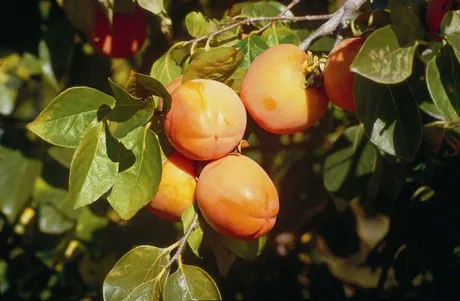The impact of the frosts early in the year, as well as of the hail in spring and summer in Valencia's kaki producing areas, will translate into about 35-40% less production in the next campaign, which will start in autumn.
"At the moment, it seems that we will harvest between 35 and 40% less than we expected before the frost and hail storms took place; that is, about 360 million kilos," says Pascual Prats, new president of the Spanish Kaki Association. "There will be no shortage of kakis, but there won't be any leftover either."
Although the harvest has so far been delayed by about fifteen days due to the low temperatures in spring, Prats says that the treatments used to speed up the crops' development will allow the markets to have kakis on the usual dates. Regarding the sizes, although it is still early to know, the fact that so many kakis have fallen from the trees means that the trees will be a lower fruit load in general; therefore, there may be an abundance of large sizes. "We hope to have similar calibres to those of the previous season," says Pascual Prats.
"We hope to unite the sector under common quality standards"
One of the main objectives pursued by the new president of the Spanish Kaki Association is to reach an agreement with all parties representing the kaki sector and wholesale and retail distributors and establish a common quality standard for both Category I and Category II.
"We all need to reach an agreement, from the producer associations and the Regulatory Board of the PDO Kaki Ribera del Xúquer all the way to the marketers and the representatives of large distribution and wholesale markets. Kaki distributors must understand that producers are unable to supply fruit as perfect-looking as billiard balls, and more so in campaigns like this. The fact that a fruit has some small scratch on the skin does not mean that it is not suitable for consumption, or that it doesn't have the best organoleptic properties, so the price shouldn't need to fall so much. We can agree, for example, for these small scratches on the skin not to be longer than 1.5 centimetres," explains Pascual Prats. "It is very important for an absolute consensus to be reached in the kaki sector, as that will make distributors more willing to listen," he says.
"I am very optimistic about the possibility of the kaki sector uniting and I believe that we are on the right track. Even though we are actually competitors in the market, we all pursue a common interest, and that is that kaki remains a profitable product. To that end, we must put the interests of the producers first," he says.
Pascual Prats, together with other representatives of the sector and exporters, will soon embark on a commercial mission to China and will have some talks with the Ministry of Agriculture, Food and Fisheries in order to expedite the approval of the protocols for this country. "We urgently need to open the Chinese market due to its purchasing potential. In Europe, kaki prices have been hitting rock bottom in recent years."
"Having only one leading variety is an advantage"
The most widely planted variety in Spain is the Rojo Brillante, which is highly appreciated by markets around the world and can be distributed for 5 to 6 months, given a good planning in the field and the use of cooling chambers. There are also smaller volumes of other varieties, such as the Maxim, which is harvested between two and three weeks before the Rojo Brillante, the Ernesto, which is similar to the Rojo Brillante, but with larger calibres, or the Fuyu.
While for some it seems that having only one leading variety is a limiting factor for the fruit's marketing and expansion, for Pascual Prats it is an advantage. "When consumers buy a kaki from Spain, which in more than 90% of cases is a Rojo Brillante, they know what to expect. There are, for example, a multitude of clementine varieties, which often leads to confusion among consumers. With the Rojo Brillante, we get much greater homogeneity in terms of taste, quality and product identification."



